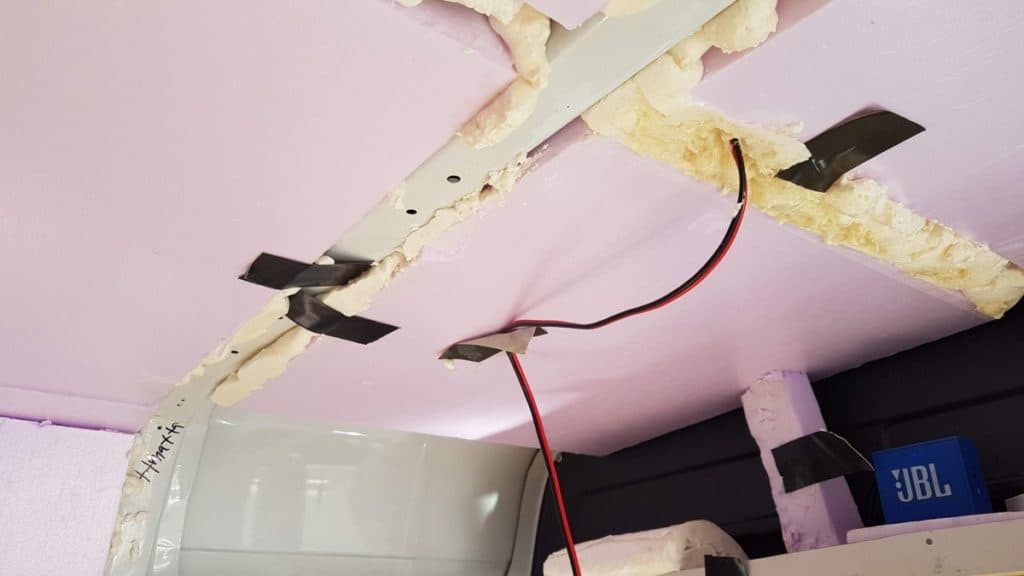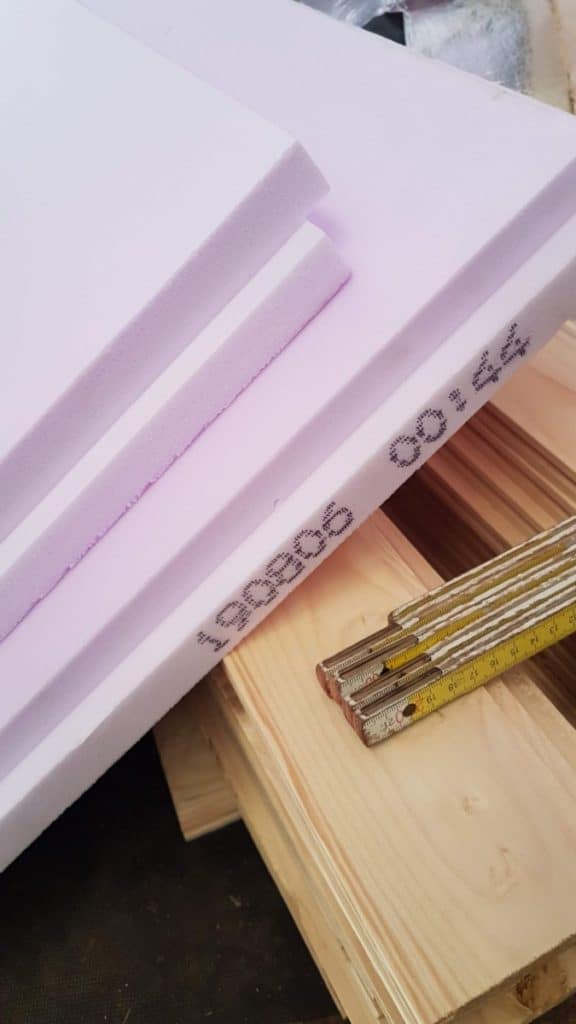As an Amazon Associate, we earn from qualifying purchases. We may also earn commissions if you purchase products from other retailers after clicking on a link from our site.
Polyurethane is a unique plastic material that offers many benefits over other plastic or organic materials, making it ideal in the boating industry, marine polyurethane is often used to coat the exterior surface of boats or as a core between layers of fiberglass. Still, what is marine polyurethane, and what makes it unique?
Marine polyurethane (MP) is a reference to a type of coating specifically designed for use on boats. It is more weather-resistant and flexible than regular polyurethane, making it ideal for painting sea vessels. Foam MP can also be used in the hull core, improving a boat’s buoyancy and reducing weight.
This article will discuss the difference between marine and non-marine polyurethane and highlight the benefits of using marine polyurethane to paint boats. Read on for more details and a step-by-step guide on painting your boat with this fantastic weather-resistant polyurethane!
The Difference Between Marine and Non-Marine Polyurethane
There are many types of polyurethane on the market, and each has its advantages and disadvantages. In general, marine polyurethane is designed for use in water, while non-marine polyurethane is not. So, what sets marine and regular polyurethane apart?
Here’s a table summary of the notable differences between marine and non-marine polyurethane:
| Marine Polyurethane | Regular Polyurethane | |
| Weather Resistance | Does not bubble or crack in harsh weather | Tends to crack and bubble in harsh weather |
| Flexibility | Does not crack when stretched | Tends to crack when stretched |
| Bubbles on Finish | Less likely to bubble | More likely to bubble |
| Price | More expensive | Cheaper |
I’ll describe each of these differences below:
Marine Polyurethane Is More Weather-Resistant
Generally speaking, marine polyurethane is more weather-resistant than regular polyurethane and therefore is best suited for indoor applications.
Marine polyurethane can withstand extreme rain, wind, and sun exposure.
On the other hand, regular polyurethane is not as weather-resistant and is more likely to crack or bubble in severe weather. If you live in an area with extreme conditions, it’s essential to use a marine polyurethane coating to protect your boat.
Marine Polyurethane Is More Flexible
Another critical difference between marine and non-marine polyurethane is that marine polyurethane is more flexible than regular polyurethane. That means that it can bend and stretch without breaking, making it ideal for use on fiberglass and wood.
Most people use marine polyurethane to coat the bottom of boats, as it can flex with the movement of the hull.
Regular polyurethane is less flexible than marine polyurethane and is more likely to crack or break when bent or stretched. So, if you’re looking for a flexible coating for your boat, marine polyurethane is the way to go.
Marine Polyurethane Is Less Likely To Form Bubbles
Another benefit of marine polyurethane is that it is less likely to form bubbles than regular polyurethane.
As a result, marine polyurethane provides a smooth, glossy finish that is less likely to exhibit bubbles or other imperfections.
If you’re looking for a high-quality finish for your boat, marine polyurethane is the way to go.
Marine Polyurethane Is More Expensive
Price is another difference between marine and regular polyurethane. Marine polyurethane is more expensive than standard polyurethane since it has a specific application and uses rarer, more advanced ingredients to create a flexible, durable seal.
However, the extra cost is often worth it, as marine polyurethane offers many benefits over regular polyurethane.
Good Alternatives on Amazon
If you’re looking for a good polyurethane coating for your boat, here are a few options worth buying from Amazon.com:
- Epifanes Polyurethane Dark Blue: This is a high-quality marine varnish that provides a durable, glossy finish.
- Two-Part Clear Polyurethane (Epifanes): This polyurethane is ideal for use on marine plywood surfaces, and it features a scratch-resistant, clear finish.
- TotalBoat Halcyon Marine Varnish: This two-part polyurethane provides a high-gloss, UV-resistant finish.
What is Closed-Cell Polyurethane Foam?

Still, there’s another type of polyurethane often used on boats that some people get mixed up with marine polyurethane. Closed-cell polyurethane foam is an entirely different material, but it is a fantastic addition to any watercraft.
Closed-cell polyurethane foam is often used in boat construction for flotation, as it has a high buoyancy to weight ratio. It is also resistant to water and weathering and is a good insulator.
Additionally, it is easy to mold closed-cell polyurethane foam into various shapes. Because of that, it is well-suited for use in boat hulls and other vessel components that need to be curved or shaped.

In a nutshell, here are the primary reasons closed-cell polyurethane foam is better for marine applications:
- Closed-cell polyurethane foam is water-resistant. This foam won’t absorb water, so it will maintain its buoyancy and insulation properties in wet environments.
- Closed-cell polyurethane foam is weather-resistant. Polyurethane foam is resistant to rain, wind, and sun, making it a good choice for equipment and machinery exposed to the elements. This weather resistance is crucial for the marine industry since boats have to endure severe weather and tons of water.
- Closed-cell polyurethane foam is lightweight. This foam has a lower density than other types of polyurethane, making it a good choice for boats that need to stay light.
- Closed-cell polyurethane foam is easy to mold. Closed-cell polyurethane foam can be easily molded into any shape, making it a good choice for irregularly-shaped spots like boat hulls.
How To Paint a Boat With Marine Polyurethane
Now that you know the difference between marine and non-marine polyurethane, it’s time to learn how to paint your boat with this material. Here’s a step-by-step guide:
1. Gather Your Materials
To paint a boat with polyurethane, you’ll need:
- Polyurethane
- Primer
- Paintbrush
- Paint roller
- Masking tape
- Paper towels
- Random orbital sander
- Dust mask
- Goggles
- Sandpaper
- Paint tray
Once you have gathered the mentioned tools, it’s time to head out to the dock and get started with the fun part!
2. Rid the Boat of Dirt and Grime
Cleaning your boat is the first step in painting it. Getting rid of all the grime will ensure that the polyurethane sticks to your boat permanently.
Follow these steps to rid your boat of dirt and grime:
- Use a brush and some warm soapy water to scrub the surface.
- Rinse the boat with a hose.
- Allow the boat to dry completely.
Note: If you have any stubborn dirt or grime, you can use a pressure washer to remove it. However, ensure the pressure washer is 6-8 feet away from the boat. Also, ensure the washer has a broad tip and that the nozzle is angled. Avoid using ammonia-based cleaning agents since they are generally harsh and may damage your boat’s surface.
3. Sand the Boat
Next, you’ll need to sand the boat. Sanding will help create a smooth surface for the primer and paint to adhere to. The paint may peel or chip off if you don’t do this.
To sand the boat, follow these steps:
- Wear your dust mask and goggles.
- Use a random orbital sander and 100-grit sandpaper to sand the entire boat.
- (Be sure to sand in the direction of the wood grain).
- If any areas are particularly rough, use finer grit sandpaper (220-grit or higher).
4. Apply the Primer
Once the boat is clean and sanded, it’s time to apply the primer. Primer will help seal the surface and create a smooth, tacky base for the paint to adhere to.
To apply the primer, follow these steps:
- Pour some primer into a paint tray.
- Use a brush to apply the primer to all the boat areas that you sanded. Be sure to get into all the crevices and corners.
- Allow the primer to dry completely (usually 2 – 4 hours).
5. Paint the Boat With Polyurethane
After the primer has dried, it’s time to paint the boat.
To paint the boat, follow these steps:
- Pour some paint into a paint tray.
- Use a roller to apply the paint to all the boat areas that you primed. Be sure to get into all the crevices and corners.
- Allow the paint to dry completely (usually 6 – 8 hours). For the best results, let it dry during the day and overnight.
6. Apply a Second Coat of Polyurethane (If Needed)
If you feel that the boat needs a second coat of paint, go ahead and apply it. To do so, follow these steps:
- Let the first coat dry completely before applying the second one.
- Pour some paint into a paint tray.
- Apply the paint in the same way you applied the primer.
- Allow the paint to dry completely (usually 6 – 8 hours).
Here’s a video that demonstrates how to paint your boat with polyurethane:
Note: If you need to apply a third coat, do so in the same way as the second one, ensuring the second coat is dry before applying the third.
Can You Use Polyurethane on Boat Wood?
You can use polyurethane on boat wood. However, it’s essential to use a sealant specifically designed for marine use. Polyurethane is a good choice because it’s durable and protects the wood from damage by the elements.
In addition, you should use low-VOC (volatile organic compounds) or no-VOC marine polyurethane to avoid releasing harmful chemicals into the air. Look for products labeled “green” or “environmentally friendly.”
Also, ensure you follow the manufacturer’s instructions for applying the polyurethane and be sure to sand the wood thoroughly before applying it. Sanding will help the polyurethane adhere better to the surface and will also help it last longer.
What Other Finish Is Used on Boats?
The finish used on boats is typically a layer of paint or varnish. Varnish is a type of finish applied to wood and gives it a high-gloss look. It also protects the wood from water and weathering.
There are many different types of varnishes, each with its unique properties. Some varnishes are even designed specifically for boats. Here’s a rundown of some of the common types of varnishes used in marine applications:
- Polyurethane: Polyurethane is a type of varnish known for its high gloss finish and durability. As I mentioned, it is often used on boats because it is water and weather-resistant.
- Epoxy: Epoxy is a varnish used to seal and protect the wood from moisture and weathering. It is a popular choice for boats because it forms a tough, waterproof barrier.
- Natural resin varnish: Natural resin varnish is a type of varnish made from plant-based materials. It is known for its high gloss finish and resistance to weathering.
How Long Will Marine Varnish Last?
Marine varnish will typically last up to three years. If you keep it clean and reseal it, it can last longer. However, if it isn’t correctly taken care of, it may only last for a year or less.
Another crucial factor determining how long marine varnish will last is surface preparation. The marine varnish will generally last two to three years if the surface is clean and free of dirt, grease, and wax.
On the other hand, if you did not adequately prepare the surface, then the marine varnish may not last more than a year. Therefore, it’s critical to take the time to clean and sand the surface before applying marine varnish.
Does Marine Varnish Waterproof Wood?
Marine varnish will waterproof wood for up to 3 years. It forms a hard, protective film on the surface of the wood that resists water, mildew, and UV rays. Besides, this coat of varnish will help the wood resist staining and fading.
However, it is essential to note that marine varnish is not a cure-all. If there are any cracks or gouges in the wood, they will still be susceptible to water damage. So, you’ll need to repair any damage before applying marine varnish.
Another downside to marine varnish is that it can be challenging to use. It can be streaky and bubbly, and it takes several coats to get good coverage. Therefore, read the manufacturer’s instructions carefully before applying the coating.
Can I Use House Paint on a Boat?
You can use house paint on a boat, but it will not last long. While house paint may be less expensive, it is not designed for marine use and will peel off quickly. Instead, it’s best to use marine-grade paint or polyurethane designed explicitly for boats for good coverage and durability.
If you use house paint on a boat, you may need to reapply it more often, and it may not look as good as marine-grade paint or polyurethane. In the long term, you may end up spending more money if you use house paint instead of a marine-grade product.
Summary
If you’re looking for a durable, weather-resistant finish for your boat, marine polyurethane is a good choice. It’s less likely to form bubbles and is more flexible than other types of polyurethane.
Besides, you can use this coating on fiberglass and wood surfaces to get a higher gloss finish. Marine polyurethane typically lasts up to three years, but it’s essential to carefully follow the manufacturer’s instructions and sand the surface before applying it.
Sources
- Science Direct: Poly(urethane)s
- Research Gate: The Study of Buoyancy Behavior of Polyurethane Foam as a Ground Improvement by Constant Rate Strain Test
- Mountain Buzz: Marine Grade vs Regular Polyurethane
- Royal Society of Chemistry: Polyurethane Types, Synthesis, and Applications – A Review
- United States Environmental Protection Agency: What Are Volatile Organic Compounds (VOCs)?
- United States Environmental Protection Agency: Substitutes in Rigid Polyurethane: Marine Flotation Foam
- North Carolina State University: Closed Cell Spray Polyurethane Foam – Defined
- Theinfinitekitchen.com

